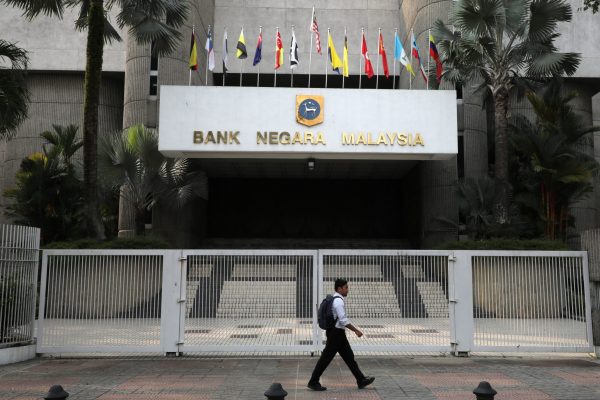There is little doubt that US–China trade frictions are having negative impacts on the global economy. Model simulations show a trade war has both direct and indirect effects. Directly, it dampens global economic activity through lower global trade flows as well as increasing prices for households and manufacturers. Indirectly, increased uncertainty curtails business investment, increases financing costs for businesses and depresses global productivity as global supply chains are disrupted.
For Malaysia, this may be even more detrimental. Not only is Malaysia a small and open economy with a relatively high dependence on trade, but much of that trade is also deeply integrated with global supply chains. Over 82 per cent of large firms in Malaysia and nearly half of all small to medium sized enterprises participate in global value chains. Besides, Malaysia has a high degree of exposure to the Chinese economy, with China being both its largest trading partner and a top source of tourists. This means that disruptions to the Chinese supply chain will have significant knock-on effects on Malaysian exports.
It has been suggested that there may be a silver lining — the opportunity for trade and investment ‘diversion’. As US importers look elsewhere for substitutes for Chinese goods, other exporters in the region stand to benefit. One estimate of the total value of global trade that will be diverted per year to avoid tariff incidence is about US$165 billion. Additionally, the first two rounds of US tariffs heavily concentrate on electrical and electronic components and circuits — products in which Malaysia has comparative advantages in exporting.
Predictably, local policymakers and government officials have emphasised the opportunities for Malaysia to benefit from the US–China trade war. But can trade and investment ‘diversion’ offset the overall negative impact of the trade war on Malaysia?
The short answer is: so far, not really.
It is possible to gauge the extent of trade ‘diversion’ by comparing pre-tariff and post-tariff export performance using US Census Bureau data of US imports from the major exporting economies in the region. Matching US imports data with the 7339 products listed in all three rounds of US tariffs reveals that so far, Malaysia has not materially benefitted from any ‘trade diversion’. In fact, Malaysian exports of both tariff-affected and non-tariff affected products have fallen on aggregate, with total exports to the United States declining by about US$90 million per month on average.
Rather, the data so far suggests that Malaysia’s regional peers are the ones who have reaped most of the benefits from the US–China trade conflict. East Asian economies such as Japan, South Korea, and Taiwan appear to be the biggest beneficiaries from export gains of tariff-affected products, particularly in exports of electronic components and motor vehicles. Vietnam is also benefitting from large gains in exports of non-tariff affected products, as well as in exports of wooden furniture and foodstuffs.
Similarly, signs of ‘investment diversion’ to Malaysia are limited. Certainly, official investment data demonstrates that approved ‘expansion/diversification’ projects have increased in 2018 in the electrical and electronics and machinery and equipment manufacturing sectors. But official foreign direct investment (FDI) data shows that over the past three quarters, manufacturing sector FDI growth has fallen even as headline FDI growth accelerated — not the clear-cut evidence of ‘investment diversion’ policymakers were hoping for.
Taken together, the evidence so far indicates that the widespread optimism about Malaysia’s potential for beneficial trade and investment diversion is misplaced. This suggests that the government should play a much more proactive role in responding to the risks of rising trade protectionism.
A recent study found that the best response to the trade war is for developing countries to pursue deeper trade and investment integration among themselves. This is in line with comments made last year by Mari Pangestu, the former Indonesian trade minister, recommending that Asia respond to rising trade protectionism by deepening regional economic integration, pursuing unilateral reforms and upholding the multilateral trading system.
In Malaysia, this would entail accelerating ongoing structural reform efforts and intensifying investment promotion abroad — while bolstering ongoing liberalisation and integration endeavours in the region including the ASEAN Economic Community, the Regional Comprehensive Economic Partnership, and the Comprehensive and Progressive Agreement for Trans-Pacific Partnership.
After all, as hopes for a comprehensive US–China trade deal wane and threats of further US tariffs on more countries loom, global uncertainty will only continue to intensify. While the vagaries of international trade are difficult to anticipate, policymakers in Malaysia and elsewhere should observe that wars are seldom won with inaction.
Calvin Cheng is a Researcher of the Division of Economics, Trade and Regional Integration (ETRI) at the Institute of Strategic and International Studies (ISIS) Malaysia.

